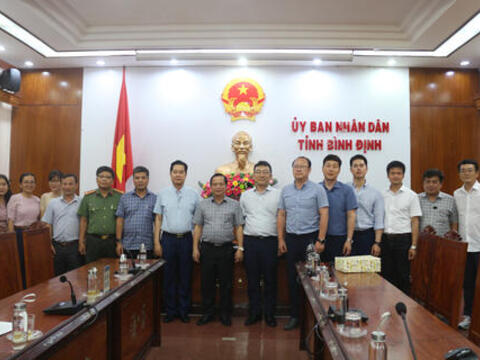1. Population
In 2019, the average population of Binh Dinh province was 1,487,900 people. The average population density is 245.1 people/km2, equal to 89.4% of the national average (274 people/km²); urban population accounted for 40.3%, rural population accounted for 59.7%; Male population accounted for 49.3%, female population accounted for 50.7%.
Binh Dinh has Kinh ethnic group (accounting for 98%), in addition, there are other ethnic groups living in the area, of which mainly 3 ethnic groups Cham, Ba Na and Hre live in mountainous and midland.
The population in the province is unevenly distributed, the population density of the whole province is 245.1 people/km2; The largest population concentration is in Quy Nhon city area (average population density of 1014.5 people/km2), followed by An Nhon town (average density of 719.1 people/km2), district Hoai Nhon (average density of 494.6 people/km2); The lowest is Van Canh district with 31.6 people/km2.
2. Labor
The development and economic restructuring of Binh Dinh province has had a positive impact on the labor structure of the province according to the trend of reducing the proportion of workers in the agricultural, forestry and fishery sectors, increasing the proportion of the public sector industry, construction and services.
As of 2019, the young labor force aged 15 and over is 891,238 people, of which working in the economy is about 864,557 workers, accounting for about 97%. In which, the labor force working in the agriculture, forestry and fishery industry is estimated at 308,360 employees (accounting for 35.6%), the labor force working in the industry and construction industry is estimated at 252,239 employees (accounting for 35.6%). 29.2%) and there are about 303,958 employees working in the trade and service industry (accounting for 35.2%).
The labor force aged 15 years and over working in the economy has been trained to reach 19.2%, of which trained workers in urban areas accounted for 31.95%, and in rural areas 14.09% is divided into many different levels of technical expertise from non-technical workers to doctoral degrees; in which the most are technical workers, accounting for 52.1% of the total number of trained workers.
There is a significant difference in the distribution of the labor force by age between urban and rural areas. The quality of labor in Binh Dinh province is still low, which is a big challenge in meeting the sustainable development goals.
[1] Source: Binh Dinh Statistical Office; Statistical Yearbook of Binh Dinh province in 2020

 Tiếng Việt
Tiếng Việt  Print the article
Print the article






